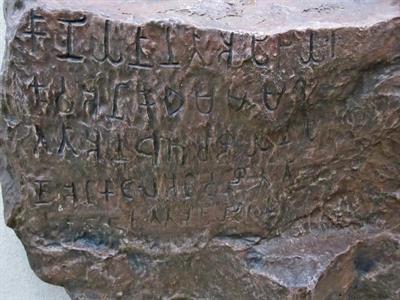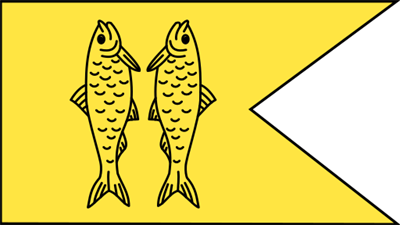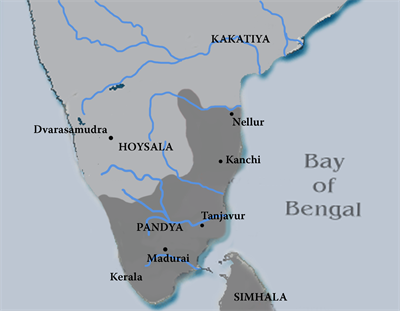
PUMPA - SMART LEARNING
எங்கள் ஆசிரியர்களுடன் 1-ஆன்-1 ஆலோசனை நேரத்தைப் பெறுங்கள். டாப்பர் ஆவதற்கு நாங்கள் பயிற்சி அளிப்போம்
Book Free DemoIntroduction:
The Pandyas were one of three ancient Tamil dynasties that ruled southern India intermittently since the \(4^t\)\(^h\) century BCE. Korkai is believed to have been their early capital and port. Later, they moved to Madurai as many early Tamil inscriptions about Pandyas have been discovered in Madurai and its surroundings.
Korkai was a well-known pearl fishery centre; it is frequently mentioned in the Sangam literature. The Periplus says that the Pandyan kingdom extended from Comari towards the north, including Korkai.

A model of the Mangulam Tamil Brahmi inscription at Dakshin Chithra, Chennai.
A Tamil-language inscription which mentions the Pandyan king Nedunchezhiyan II
and Jain monks. Dated to 2nd century AD
According to Tamil culture, the popular Sangams were held in Madurai under the patronage of the Pandyas, and some of the Pandyan rulers known to be poets themselves. The Pandyan kingdom was home to a number of renowned temples, including Meenakshi Temple in Madurai.
The Pandyas had re-established their position in the history of Tamil Nadu by the end of the \(6th\)century A.D. (C.E.), after defeating the Kalabhras. But they could not resist the growing influence of the later Cholas, who ruled South India from the 9th to 13th century. After the decline of Chola power, the later Pandyas re-established their authority and ruled until the \(16\)th century.

Twin fish flag of Pandya Dynasty
Revival of Pandya Kingdom:
The Pandyan kingdom was restored by Kadungon towards the end of the 6th century CE. In the Velvikudi copper-plate inscription, Kadungon was mentioned as the destroyer of the "anti-Brahmanical" Kalabhra kings.
Kadungon was succeeded by Arikesari Maravarman, also known as Parankusa, who ascended the throne in A.D. (C.E.) 642. He was a contemporary of Pallava rulers Mahendravarman I and Narsimahvarman I. Inscriptions and copper plates celebrate his victory over his counterparts: Cheras, Cholas, Pallavas and Sinhalese. Some theories identify Arikesari with the legendary Kun Pandiyan mentioned in Shaivite tradition, the persecutor of Jains.

Pandya Kingdom (maximum extent) - 12th-14th cenutry CE
After Arikesari, the greatest ruler of the Pandyas was Jatila Parantaka Nedunjadayan(Varaguna I) (756-815), the donor of the Velvikkudi plates. Nedunjadayan extended the Pandya territory to include Thanjavur, Tiruchirappalli, Salem and Coimbatore districts. Pallavas successively defeated Nedunjadayan’s successors. Later they could not face the rising Cholas under king Parantaka I, who defeated the Pandya ruler Rajasimha II. Thus ended the Pandya rule revived by Kadungon.
Reference:
https://commons.wikimedia.org/wiki/File:Mangulam_inscription.jpg
https://commons.wikimedia.org/wiki/File:Twin_fish_flag_of_Pandyas.svg
https://commons.wikimedia.org/wiki/File:Pandya_Kingdom_(south_India).png